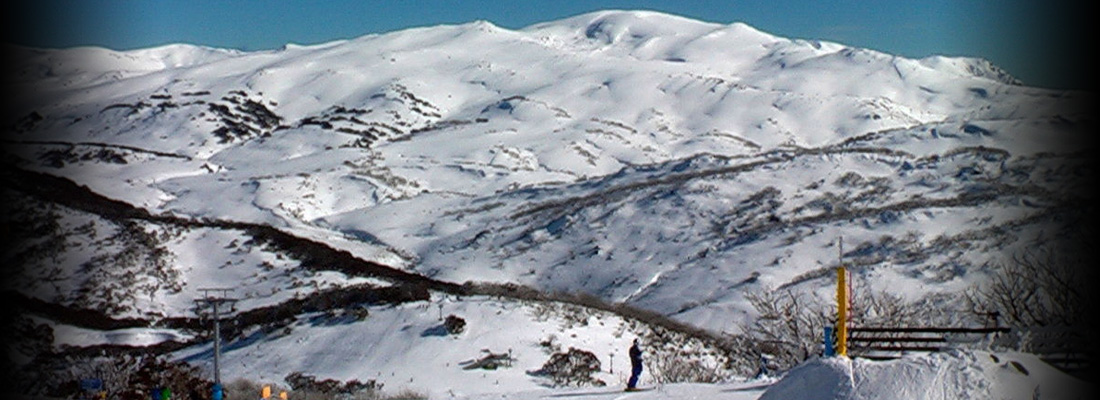

| PREVIOUS | HOME | NEXT |
Injured skier "should have been aware", judge rules
by John Reynolds, KT Journalism
The employer of a ski instructor whose negligence seriously injured a skier has escaped liability because skiing is a known dangerous recreational activity.
NSW Supreme Court Justice Richard Cavanagh cleared hairdresser and skier Deborah Janice Castle of all fault but found, as a seasoned skier, she was or should have been aware of skiing’s obvious risks.
The court heard Castle, then 53, and Perisher Blue ski instructor Michael Thoms collided at speed at the intersection of two ski runs on 16 August 2014. Castle sustained serious injuries to her right hand, left shoulder and left knee. Her injuries required surgery and ongoing treatment.
Castle sued Perisher Blue for negligence, arguing Thoms had not been paying attention when he collided with her on the downhill run.
Perisher Blue denied negligence and alleged it was Castle who had not been paying attention or was at least partially responsible for the incident.
Justice Cavanagh was told Castle was skiing with another instructor and Thoms was escorting a resort guest when the incident occurred.
Castle said she did not see Thoms until just before the collision because her view of him was obscured by a clump of trees, but he should have been able to see her.
She alleged he was negligent for:
- failing to keep a proper lookout
- failing to observe her
- failing to give way
- skiing across her path
- failing to comply with the Alpine Responsibility Code
- skiing at excessive speed, and
- failing to take evasive action.
Castle argued other skiers saw Thoms looking behind him moments before impact, which lacked a duty of care for a person of his experience and expertise.
She said Perisher Blue had not provided services to her with due care and skill as required by the 2002 NSW Civil Liability Act’s (CLA) consumer guarantee.
Thoms argued it was Castle who failed to take care and look out for other skiers. He also argued she was not in the open, was skiing through trees, and was the skier who was obscured.
He said he was skiing down the slope, in front of the person he was guiding, when he “suddenly became aware of someone or something to my right side which collided with me”.
He was confident Castle had collided with him, rather than the other way around, because “I was able to remain on my feet after the collision, whereas Castle fell to the ground to her right side”.
Both Castle and Thoms provided witnesses who supported their version of events.
In its defence, Perisher Blue admitted it was vicariously liable for Thoms’s conduct but argued he could not be found negligent if Justice Cavanagh accepted his evidence.
It said the collision occurred because Castle either skied through the trees or close to the end of the tree line, appearing unexpectedly in front of Thoms, so he had neither the time nor the space to avoid her.
The ski resort also rejected Castle’s reliance on CLA, arguing the incident was covered under CLA’s dangerous recreational activities and risk warning exemption clauses. All skiers were made aware of the dangers and risks involved in skiing, as required by CLA.
In his 20 November 2020, judgement, Justice Cavanagh said it was surprising neither of the “competent, experienced skiers” had seen each other until just before the collision.
But he accepted Castle’s evidence she did not ski through the trees to reach the impact point, nor did she ski close to the end of the tree line where Thoms could not see her.
He found Thoms turned to look behind him when he was skiing quickly through a snow rollover that temporarily obscured his vision. It was at that point he intersected Castle’s path.
Justice Cavanagh accepted Thoms’s evidence he “would not normally have looked around at that particular point” but the fact was an eyewitness said he did.
“He failed to exercise reasonable care [and], in all of the circumstances, Thoms was negligent and [Perisher Blue] is vicariously liable for his conduct.”
He would have awarded Castle $651,801.17 for her injuries and treatment, but accepted Perisher Blue’s argument that skiing was a dangerous activity, and the risk of injury was obvious.
Perisher Blue had therefore established a sustainable CLA defence.
“Unfortunately, even the best skiers have accidents,” Justice Cavanagh said. “Even if the rate of collision per skier is low, the potential harm is high or great. In the circumstances, I consider skiing is a dangerous recreational activity.”
While he believed Perisher Blue’s risk warning to skiers was “too general and did not identify any particular risks associated with skiing”, Justice Cavanagh rejected Castle’s argument Perisher Blue had not rendered its services with due care and skill.
Thoms’s “casual act of negligence” did not affect how Perisher Blue provided its services to skiers.
While Thoms may have failed to comply with the Alpine Responsibility Code, that did not mean Perisher Blue also failed to comply. There was no evidence Thoms was not properly trained, instructed or supervised, and he was authorised to work on the facilities’ ski fields.
If Thoms had been providing instructions directly to Castle at the time he was negligent, Perisher Blue would have been vicariously liable. However, Thoms was working with another skier at the time.
Justice Cavanagh said Castle’s case was “another example” of how recollections about an event could differ not only between “the actors” involved, but also between seemingly independent witnesses.
“It is also another example of the difficulties faced by injured persons in pursuing tortious claims arising out of participation in sporting and recreational activities,” he said.
Castle v Perisher Blue Pty Ltd [2020] NSWSC 1652, 20/11/20
Resolve is the official publication of the Australian Insurance Law Association and
the New Zealand Insurance Law Association.

